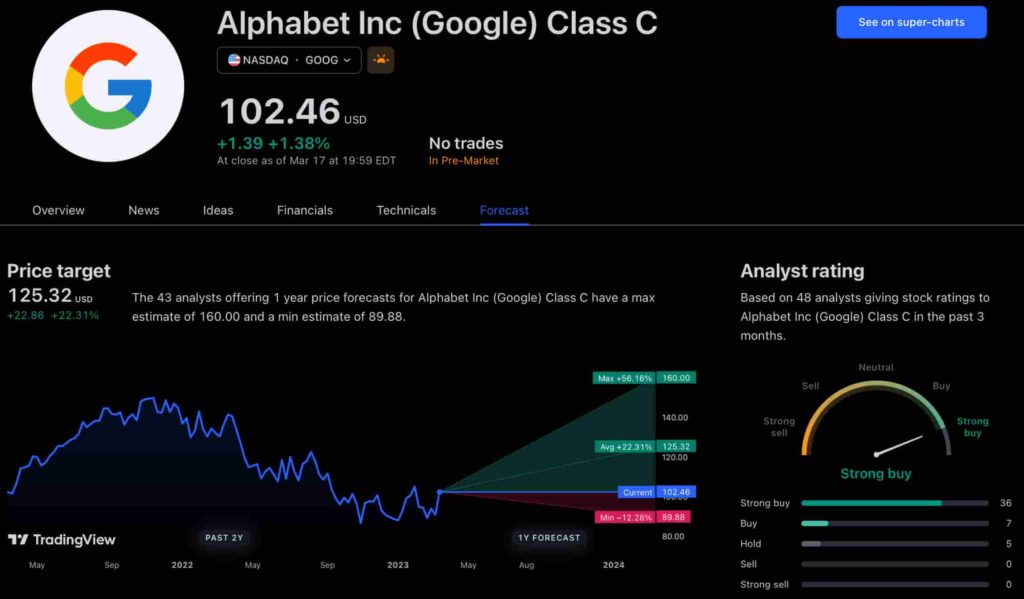The new app is called watchGPT and as I tipped off already, it gives you access to ChatGPT from your Apple Watch. Now the $10,000 question (or more accurately the $3.99 question, as that is the one-time cost of the app) is why having ChatGPT on your wrist is remotely necessary, so let’s dive into what exactly the app can do.
NEWS
OptinMonster Vulnerability Affects +1 Million Sites

WordPress security researchers reported that a flaw in the OptinMonster WordPress plugin was found to allow hackers to upload malicious scripts to attack site visitors and lead to full site takeovers. Failure to perform a basic security check exposes over a million sites to potential hacking events.
Lack of REST-API Endpoint Capability Checking
This vulnerability isn’t due to hackers being really smart and finding a clever way to exploit a perfectly coded WordPress plugin. Quite the opposite.
According to security researchers at popular WordPress security company Wordfence, the exploit was due to a failure in the WordPress REST-API implementation in the OptinMonster WordPress plugin which resulted in “insufficient capability checking.”
When properly coded, REST-API is a secure method to extend WordPress functionality by allowing plugins and themes to interact with a WordPress site for managing and publishing content. It allows a plugin or theme to interact directly with the website database without compromising security… if properly coded.
The WordPress REST-API documentation states:
“…the most important thing to understand about the API is that it enables the block editor and modern plugin interfaces without compromising the security or privacy of your site.”
The WordPress REST-API is supposed to be secure.
Unfortunately, all websites using OptinMonster had their security compromised because of how OptinMonster implemented the WordPress REST-API.
Majority of REST-API Endpoints Compromised
REST-API endpoints are URLs that represent the posts and pages on a WordPress site that a plugin or theme can modify and manipulate.
But according to Wordfence, almost every single REST-API endpoint in OptinMonster was improperly coded, compromising website security.
Wordfence slammed OptinMonster’s REST-API implementation:
“…the majority of the REST-API endpoints were insecurely implemented, making it possible for unauthenticated attackers to access many of the various endpoints on sites running a vulnerable version of the plugin.
…nearly every other REST-API endpoint registered in the plugin was vulnerable to authorization bypass due to insufficient capability checking allowing unauthenticated visitors, or in some cases authenticated users with minimal permissions, to perform unauthorized actions.”
Unauthenticated means an attacker that isn’t registered in any way with the website being attacked.
Some vulnerabilities require an attacker to be registered as a subscriber or contributor, which makes it a little harder to attack a site, especially if a site doesn’t accept subscriber registrations.
This vulnerability had no such barrier at all, no authentication was necessary to exploit OptinMonster, which is a worst-case scenario compared to authenticated exploits.
Wordfence warned about how bad an attack on a website using OptinMonster could be:
“…any unauthenticated attacker could add malicious JavaScript to a site running OptinMonster, which could ultimately lead to site visitors being redirected to external malicious domains and sites being completely taken over in the event that JavaScript was added to inject new administrative user accounts or overwrite plugin code with a webshell to gain backdoor access to a site.”
Recommended Course of Action
Wordfence notified the publishers of OptinMonster and about ten days later released an updated version of the OptinMonster that plugged all of the security holes.
The most secure version of OptinMonster is version 2.6.5.
Wordfence recommends that all users of the OptinMonster update their plugin:
“We recommend that WordPress users immediately verify that their site has been updated to the latest patched version available, which is version 2.6.5 at the time of this publication.”
WordPress offers documentation on best practices for REST-API and asserts that it is a secure technology.
So if these kinds of security issues aren’t supposed to occur, why do they keep on happening?
The WordPress documentation on best practices for the REST-API states:
“…it enables the block editor and modern plugin interfaces without compromising the security or privacy of your site.”
With over a million sites affected by this vulnerability one has to wonder why, if best practices exist, this kind of vulnerability happened on the highly popular OptinMonster plugin.
While this isn’t the fault of WordPress itself, this kind of thing does reflect negatively on the entire WordPress ecosystem.
Citation
Read the Report About OptinMonster at Wordfence
1,000,000 Sites Affected by OptinMonster Vulnerabilities
Facebook Faces Yet Another Outage: Platform Encounters Technical Issues Again

Uppdated: It seems that today’s issues with Facebook haven’t affected as many users as the last time. A smaller group of people appears to be impacted this time around, which is a relief compared to the larger incident before. Nevertheless, it’s still frustrating for those affected, and hopefully, the issues will be resolved soon by the Facebook team.
Facebook had another problem today (March 20, 2024). According to Downdetector, a website that shows when other websites are not working, many people had trouble using Facebook.
This isn’t the first time Facebook has had issues. Just a little while ago, there was another problem that stopped people from using the site. Today, when people tried to use Facebook, it didn’t work like it should. People couldn’t see their friends’ posts, and sometimes the website wouldn’t even load.
Downdetector, which watches out for problems on websites, showed that lots of people were having trouble with Facebook. People from all over the world said they couldn’t use the site, and they were not happy about it.
When websites like Facebook have problems, it affects a lot of people. It’s not just about not being able to see posts or chat with friends. It can also impact businesses that use Facebook to reach customers.
Since Facebook owns Messenger and Instagram, the problems with Facebook also meant that people had trouble using these apps. It made the situation even more frustrating for many users, who rely on these apps to stay connected with others.
During this recent problem, one thing is obvious: the internet is always changing, and even big websites like Facebook can have problems. While people wait for Facebook to fix the issue, it shows us how easily things online can go wrong. It’s a good reminder that we should have backup plans for staying connected online, just in case something like this happens again.
NEWS
We asked ChatGPT what will be Google (GOOG) stock price for 2030

Investors who have invested in Alphabet Inc. (NASDAQ: GOOG) stock have reaped significant benefits from the company’s robust financial performance over the last five years. Google’s dominance in the online advertising market has been a key driver of the company’s consistent revenue growth and impressive profit margins.
In addition, Google has expanded its operations into related fields such as cloud computing and artificial intelligence. These areas show great promise as future growth drivers, making them increasingly attractive to investors. Notably, Alphabet’s stock price has been rising due to investor interest in the company’s recent initiatives in the fast-developing field of artificial intelligence (AI), adding generative AI features to Gmail and Google Docs.
However, when it comes to predicting the future pricing of a corporation like Google, there are many factors to consider. With this in mind, Finbold turned to the artificial intelligence tool ChatGPT to suggest a likely pricing range for GOOG stock by 2030. Although the tool was unable to give a definitive price range, it did note the following:
“Over the long term, Google has a track record of strong financial performance and has shown an ability to adapt to changing market conditions. As such, it’s reasonable to expect that Google’s stock price may continue to appreciate over time.”
GOOG stock price prediction
While attempting to estimate the price range of future transactions, it is essential to consider a variety of measures in addition to the AI chat tool, which includes deep learning algorithms and stock market experts.
Finbold collected forecasts provided by CoinPriceForecast, a finance prediction tool that utilizes machine self-learning technology, to anticipate Google stock price by the end of 2030 to compare with ChatGPT’s projection.
According to the most recent long-term estimate, which Finbold obtained on March 20, the price of Google will rise beyond $200 in 2030 and touch $247 by the end of the year, which would indicate a 141% gain from today to the end of the year.
Google has been assigned a recommendation of ‘strong buy’ by the majority of analysts working on Wall Street for a more near-term time frame. Significantly, 36 analysts of the 48 have recommended a “strong buy,” while seven people have advocated a “buy.” The remaining five analysts had given a ‘hold’ rating.

The average price projection for Alphabet stock over the last three months has been $125.32; this objective represents a 22.31% upside from its current price. It’s interesting to note that the maximum price forecast for the next year is $160, representing a gain of 56.16% from the stock’s current price of $102.46.
While the outlook for Google stock may be positive, it’s important to keep in mind that some potential challenges and risks could impact its performance, including competition from ChatGPT itself, which could affect Google’s price.
Disclaimer: The content on this site should not be considered investment advice. Investing is speculative. When investing, your capital is at risk.
NEWS
This Apple Watch app brings ChatGPT to your wrist — here’s why you want it

ChatGPT feels like it is everywhere at the moment; the AI-powered tool is rapidly starting to feel like internet connected home devices where you are left wondering if your flower pot really needed Bluetooth. However, after hearing about a new Apple Watch app that brings ChatGPT to your favorite wrist computer, I’m actually convinced this one is worth checking out.
-

 PPC4 days ago
PPC4 days ago19 Best SEO Tools in 2024 (For Every Use Case)
-

 MARKETING7 days ago
MARKETING7 days agoWill Google Buy HubSpot? | Content Marketing Institute
-
SEARCHENGINES7 days ago
Daily Search Forum Recap: April 16, 2024
-

 SEO7 days ago
SEO7 days agoGoogle Clarifies Vacation Rental Structured Data
-

 MARKETING6 days ago
MARKETING6 days agoStreamlining Processes for Increased Efficiency and Results
-
SEARCHENGINES6 days ago
Daily Search Forum Recap: April 17, 2024
-

 PPC7 days ago
PPC7 days agoHow to Collect & Use Customer Data the Right (& Ethical) Way
-

 SEO6 days ago
SEO6 days agoAn In-Depth Guide And Best Practices For Mobile SEO


![Astra Theme Coupon 2024 (Apr) [40% Discount, Save $400] Astra Pricing Plans on discounts](https://articles.entireweb.com/wp-content/uploads/2024/04/1713797772_611_Astra-Theme-Coupon-2024-Apr-40-Discount-Save-400-400x240.png)
![Astra Theme Coupon 2024 (Apr) [40% Discount, Save $400] Astra Pricing Plans on discounts](https://articles.entireweb.com/wp-content/uploads/2024/04/1713797772_611_Astra-Theme-Coupon-2024-Apr-40-Discount-Save-400-80x80.png)
![Elementor Pro Discount (Apr 2024) [70% OFF, Save $150] Elementor Coupon](https://articles.entireweb.com/wp-content/uploads/2024/04/1713729377_Elementor-Pro-Discount-Apr-2024-70-OFF-Save-150-400x240.png)
![Elementor Pro Discount (Apr 2024) [70% OFF, Save $150] Elementor Coupon](https://articles.entireweb.com/wp-content/uploads/2024/04/1713729377_Elementor-Pro-Discount-Apr-2024-70-OFF-Save-150-80x80.png)










You must be logged in to post a comment Login